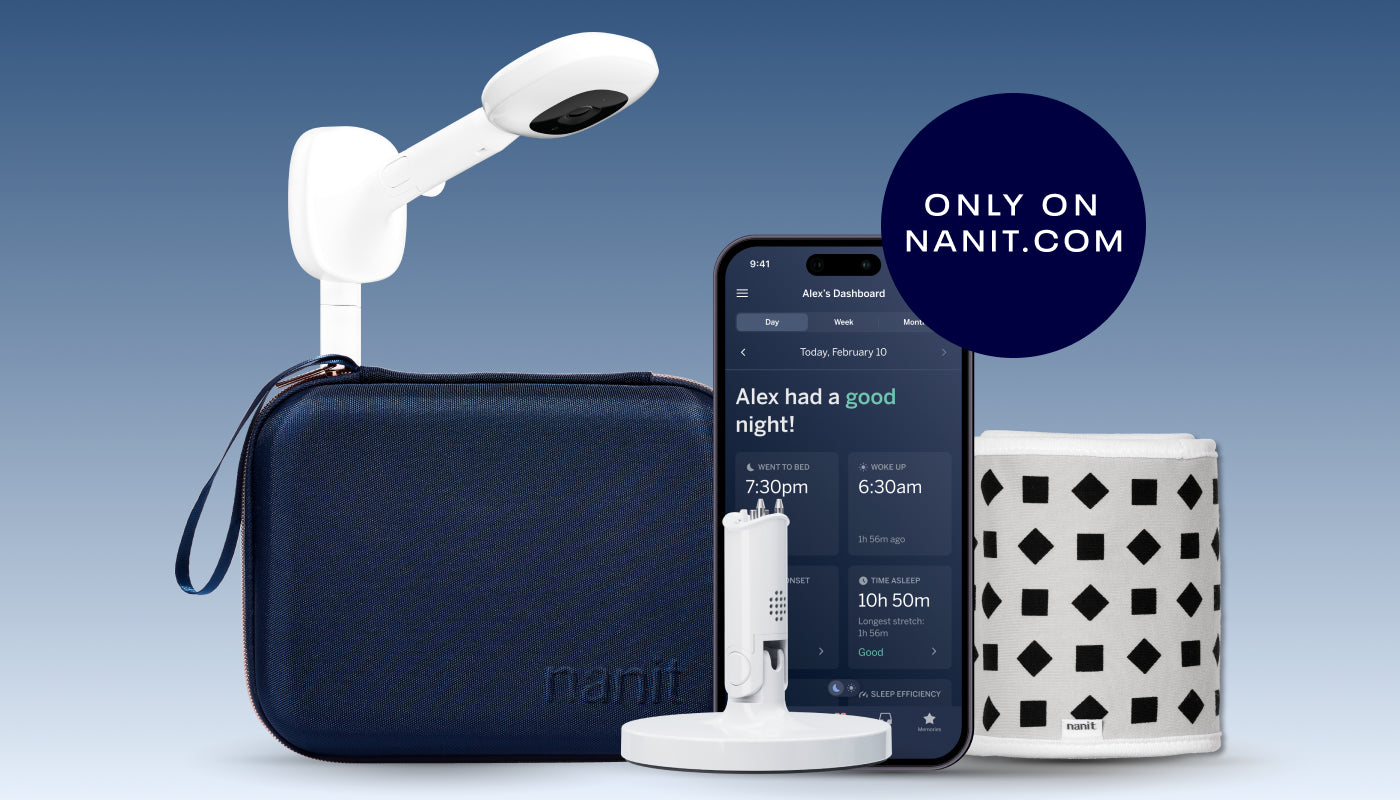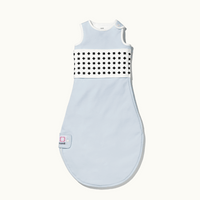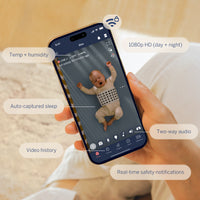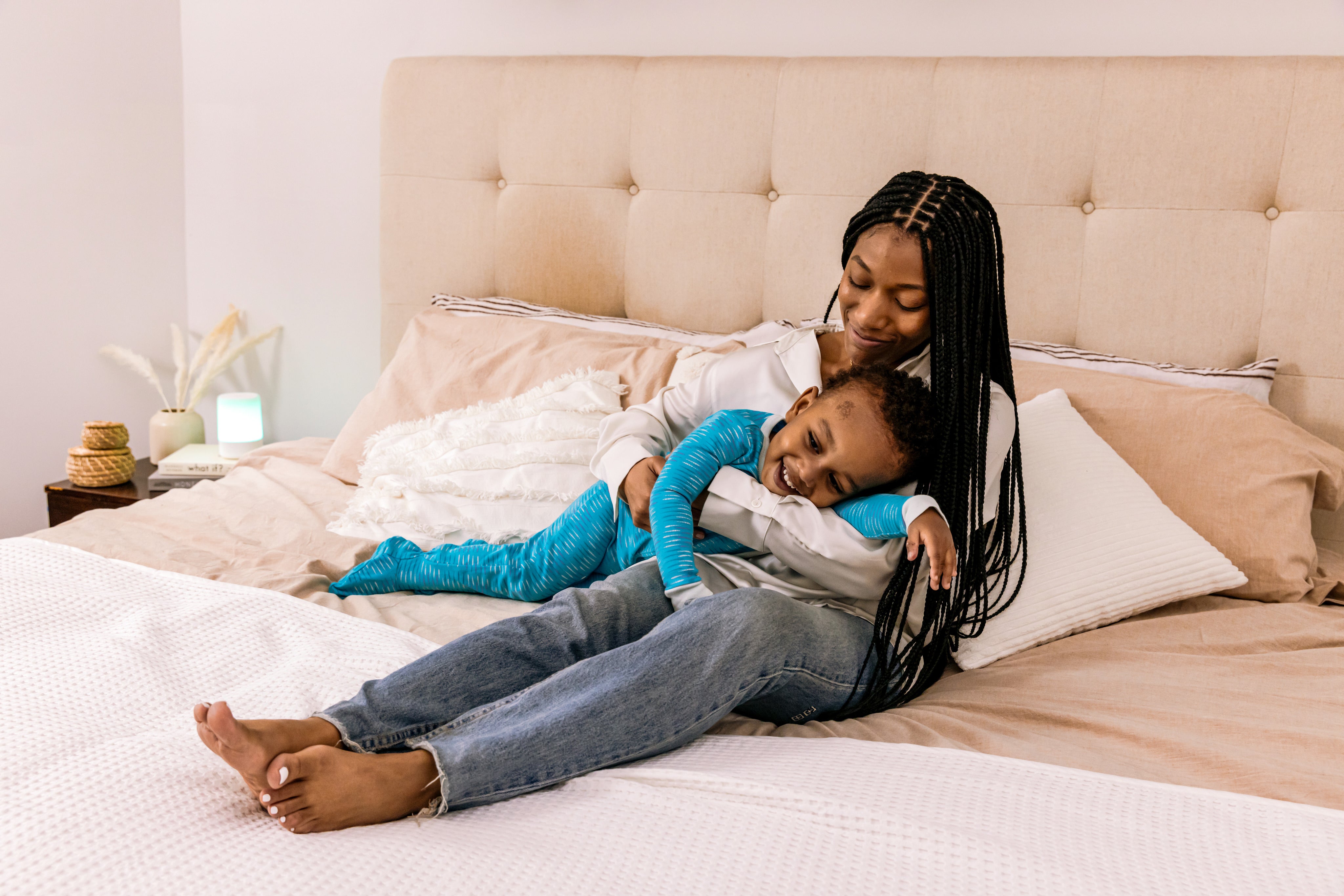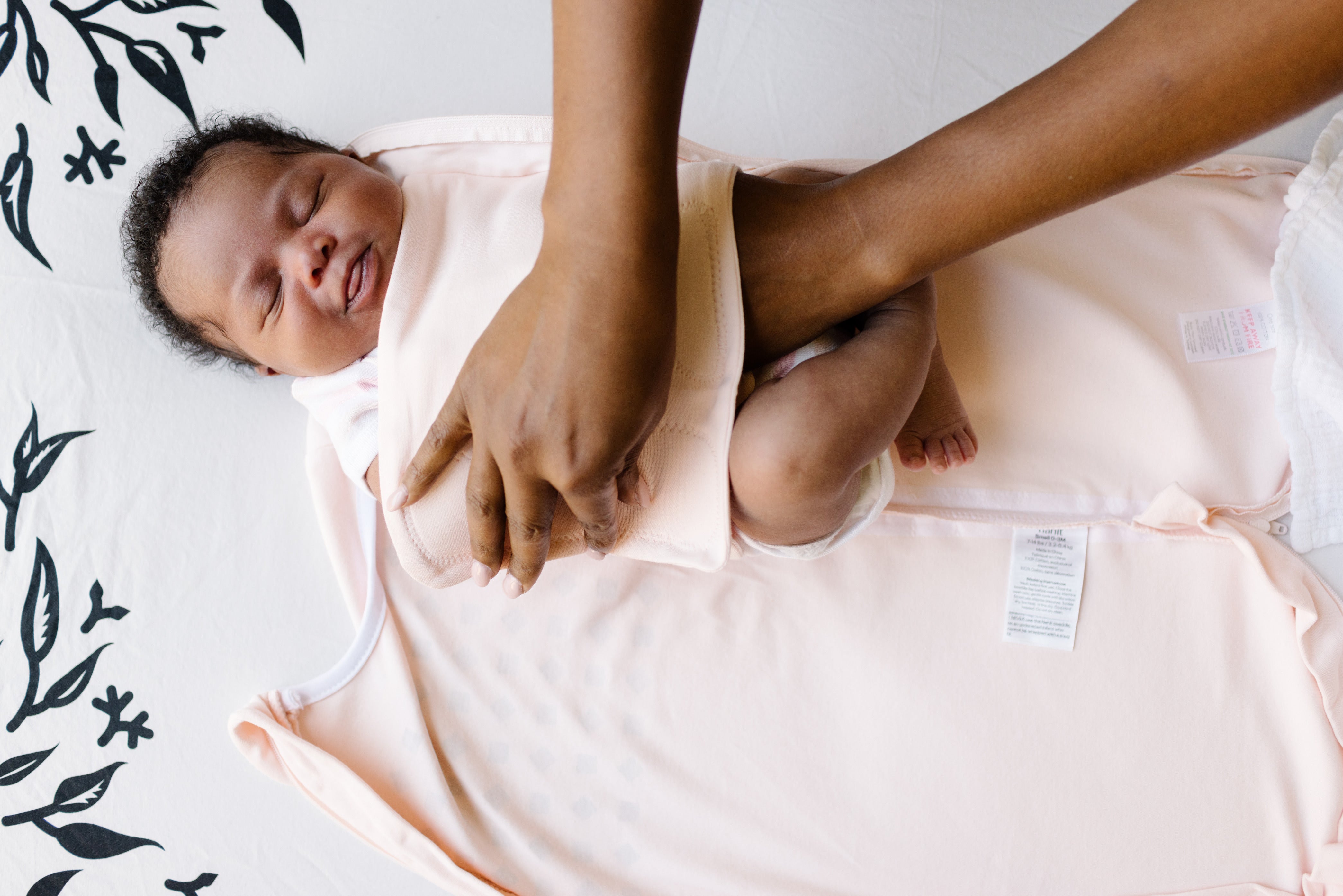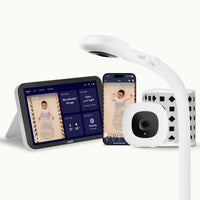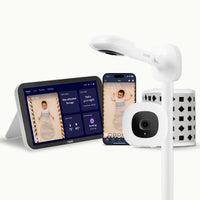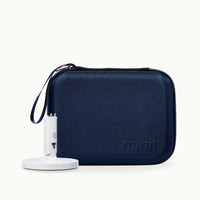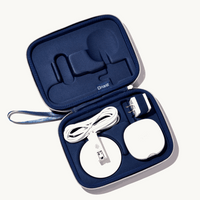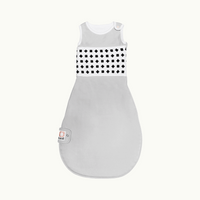Reviewed by Nanit Lab's Dr. Natalie Barnett.
5 benefits of swaddling a baby
Imagine you’ve settled down for a nap in a soft blanket that’s wrapped just snugly enough to feel like a gentle hug. Sounds relaxing, doesn’t it? It’s no wonder that babies also seem to love the feeling of drifting off to dreamtime, all wrapped up in a cloud-soft swaddling blanket.
For thousands of years in cultures around the world, people have been lovingly swaddling their babies. The benefits of swaddling a baby can include everything from better sleep to less crying.
What is swaddling, exactly? Swaddling mimics the feeling of being in the womb, where your baby is surrounded by soft pressure and warmth. This can activate the calming response, a natural reflex that helps babies relax and stop crying. If you want to try swaddling your baby, read on as we cover all the benefits of this snuggly practice, along with tips to swaddle safely and securely.
Purpose of swaddling
So, when and why should you swaddle your baby?
Typically, parents swaddle when putting their baby down for bedtime or naptime. It’s also helpful for soothing a fussy baby who has trouble settling.
Swaddling serves a wide variety of purposes, including:
- Inducing the calming response
- Encouraging deeper sleep by reducing the startle or Moro reflex
- Soothing colicky babies
- Providing comfort and warmth
Swaddling isn’t just a tradition with a long history—it’s a beneficial practice used by experts and medical professionals. Before you try swaddling, it's important to know how to swaddle a baby and understand how long you can swaddle your little one to ensure their utmost safety and comfort.
Benefits of swaddling
To understand the importance of swaddling, it’s key to understand the research behind the practice. To that end, let’s dive into 5 swaddling benefits:
1. Promote better, safer sleep
The safest sleep position for babies is supine, or lying flat on the back. However, many parents find that when babies lay in the supine position, they don’t seem to sleep as comfortably or deeply, and often startle themselves awake with sudden kicking or flapping arm movements.
Swaddling keeps babies in a safe sleep position while providing extra comfort and security. Studies have found that swaddled babies startle less often, get more sleep, fall back to sleep more quickly after startling, and wake less often overall.
2. Help regulate body temperature
One of the most important benefits of swaddling a newborn is temperature regulation. Both high and low body temperatures can be dangerous for babies, so using a wrap that’s warm but breathable is essential. Swaddles are ideal for several reasons:
- Cotton swaddles have been found to prevent hypothermia in newborns better than other wraps
- Swaddles prevent overheating by allowing excess heat to escape through the baby’s head and neck
- A correctly wrapped swaddle holds in warmth without the risk of suffocation that loose bedding presents
3. Provides a sense of security
According to pediatric expert Dr Harvey Karp, swaddling is a key way to trigger your baby’s natural calming response by recreating the feeling of being in the womb. The calming response reduces stress and anxiety, stops excessive crying, and helps your baby feel calm, safe, and protected.
4. Prevents infant scratching
Every parent can attest to the surprisingly nasty scratches that tiny baby fingernails can leave on delicate skin. On top of normal scratches and scrapes, many newborns develop itchy skin conditions like eczema or cradle cap that can be worsened if picked or scratched. Swaddling is a simple and effective way to keep babies from irritating their sensitive skin by scratching.
5. Provides pain relief
Swaddling is often used in medical settings when babies need extra comfort or soothing, such as after vaccinations or blood draws. One study found that swaddled babies experienced significantly less pain during a blood draw than unswaddled babies, with their vital signs returning to normal 66% faster after the procedure.
Safety tips for swaddling
Swaddling has lots of benefits, but there are also a few safety precautions to keep in mind. When swaddling your baby, be sure you:
- Swaddle properly. A loose swaddling blanket in the baby’s crib is a serious suffocation risk. To be sure your swaddle is wrapped correctly, opt for a swaddle like the Nanit Breathing Wear Swaddle that will not only monitor your baby’s breathing but will also keep baby secure as they move and kick.
- Don’t restrict hip movement. When babies are swaddled tightly, their hips and legs are kept in a straight position. This can interfere with the development of hip strength and mobility by restricting the baby’s leg movement. To avoid this, leave the fabric looser around the hips and legs, or switch to a sleep sack or swaddle that’s designed for more leg movement.
- Never place a swaddled baby on their side or stomach. The risk of sudden infant death syndrome (SIDS) is increased when a swaddled baby is put to sleep in any position except flat on the back.
- Stop when your baby shows signs of rolling over. Babies typically begin to develop the ability to roll over around 3-5 months (some even earlier). As soon as you see signs that your little one is working on rolling over, stop swaddling immediately. At this stage, switch to a sleeping bag with arms-out option or pajamas. Knowing when to stop swaddling is crucial to ensure your baby's safety and promote healthy development.
Help your baby sleep safely with Nanit
There’s a reason people have been swaddling their babies for millennia—swaddling can keep your baby snug and calm in a way that’s second only to being cuddled by you. However, parents and caregivers should use care when swaddling. Wrap a swaddle securely and never place a swaddled baby on their side or tummy.
Whether you choose to swaddle or not, Nanit has everything you need to keep your baby warm, happy, and safe.
Nanit products, from our Sleep and Breathing Wear to our Smart Sheets, are all designed to make sleepytime simpler for you and your little one. Our Pro Camera computer-vision and AI technology tracks your baby’s breathing. With Nanit and a healthy swaddling routine, you can rest assured that your baby is sleeping soundly.
Editorial Team
Dr. Natalie Barnett:
 Natalie Barnett serves as VP of Clinical Research at Nanit. Natalie initiated sleep research collaborations at Nanit and in her current role, Natalie oversees collaborations with researchers at hospitals and universities around the world who use the Nanit camera to better understand pediatric sleep and leads the internal sleep and development research programs at Nanit. Natalie holds a Ph.D. in Genetics from the University of New England in Australia and a Postgraduate Certificate in Pediatric Sleep Science from the University of Western Australia. Natalie was an Assistant Professor in the Neurogenetics Unit at NYU School of Medicine prior to joining Nanit. Natalie is also the voice of Nanit's science-backed, personalized sleep tips delivered to users throughout their baby's first few years.
Natalie Barnett serves as VP of Clinical Research at Nanit. Natalie initiated sleep research collaborations at Nanit and in her current role, Natalie oversees collaborations with researchers at hospitals and universities around the world who use the Nanit camera to better understand pediatric sleep and leads the internal sleep and development research programs at Nanit. Natalie holds a Ph.D. in Genetics from the University of New England in Australia and a Postgraduate Certificate in Pediatric Sleep Science from the University of Western Australia. Natalie was an Assistant Professor in the Neurogenetics Unit at NYU School of Medicine prior to joining Nanit. Natalie is also the voice of Nanit's science-backed, personalized sleep tips delivered to users throughout their baby's first few years.Sources
Harvard University. Should you swaddle your baby? https://www.health.harvard.edu/blog/should-you-swaddle-your-baby-201605249730
In Vivo. A randomized controlled trial of evaluating the efficacy of alternative swaddles for body temperature control of newborns. https://www.ncbi.nlm.nih.gov/pmc/articles/PMC9301418/
Journal of Clinical Nursing. A feasibility and efficacy randomized controlled trial of swaddling for controlling procedural pain in preterm infants. https://pubmed.ncbi.nlm.nih.gov/26818372/
Mayo Clinic. Common skin conditions in babies. https://mcpress.mayoclinic.org/parenting/common-skin-conditions-in-babies/
NIH. What is SIDS. https://safetosleep.nichd.nih.gov/about/sids-definition
Pediatrics. Spontaneous Arousals in supine infants while swaddled and unswaddled during rapid eye movement and quiet sleep. https://doi.org/10.1542/peds.110.6.e70
Pediatrics. Swaddling and the risk of Sudden Infant Death Syndrome: A meta-analysis. https://doi.org/10.1542/peds.2015-3275
PLoS One. Infant crying and the calming response: Parental versus mechanical soothing using swaddling, sound, and movement. https://www.ncbi.nlm.nih.gov/pmc/articles/PMC6481793/


